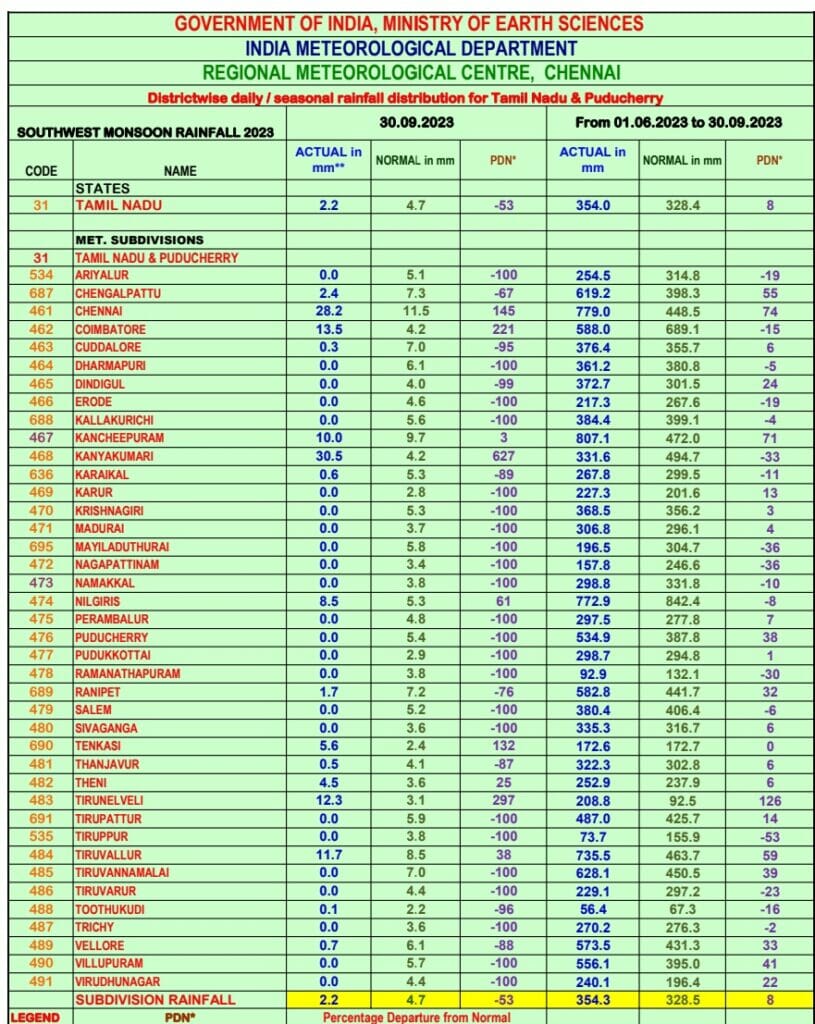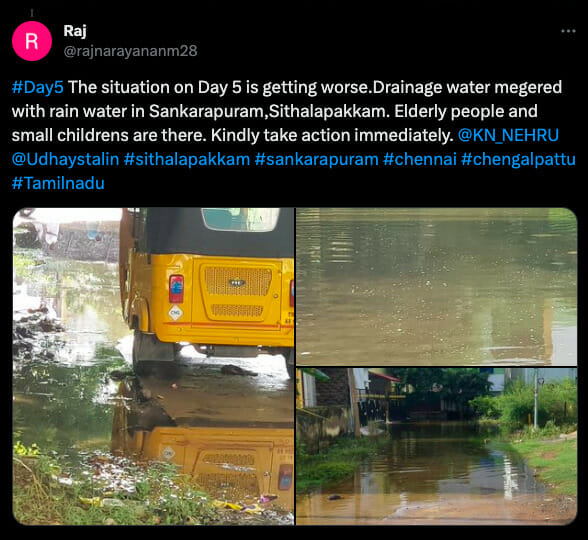Sudden, heavy downpours after hot and humid days have been a frequent occurrence over the past two months in Chennai. Such rainfall during the lesser southwest monsoon season is a deviation from the norm for the city.
The northeast monsoon season is the most critical period for rainfall in Chennai, as it provides more than 50% of the city’s annual rainfall. The southwest monsoon season, on the other hand, provides only around 20% of the city’s annual rainfall.
However, this year, the city experienced an early and abundant southwest monsoon this year.
What do these high numbers mean for the city and its preparedness for such future events?
Read more: Looking beyond stormwater drains to realise the dream of a flood-free Chennai
Rainfall trends in Chennai this southwest monsoon
The most striking deviations from the average rainfall were recorded over the period from June to September. Over this period, the Meenambakkam observatory of the India Meteorological Department (IMD) has recorded 877.5 mm of rainfall, much higher than the typical average of 434.1 mm. The Nungambakkam observatory has clocked rainfall levels of 685.8 mm since June 1.
Overall, the rainfall level for southwest monsoon in Chennai district between June 1 to September 30 this year has been 74% above normal, at 779 mm well above the average rainfall level of 448.5 mm.

The southwest monsoon has been so bountiful this year that the Meenambakkam observatory has seen record rainfall days between the months of June and September, the highest since 1943.
Meteorologists attribute this early and copious rainfall to convective showers and thunderstorm activity. These meteorological events have been catalysed by the intense monsoon along the west coast.
The city has seen high levels of rainfall even before the onset of the northeast monsoon which brings most of the rain. The northeast monsoon is expected to begin from October 20.
Read more: Chennai rains: The real reasons why urban floods are a never-ending problem in city
Impact of heavy southwest monsoon in Chennai
The practical impact of the heavy rains has been felt in the infrastructure work being carried out across the city. While the civic body usually completes stormwater drain (SWD) work for the year before the onset of the northeast monsoon, the unusually heavy rains have set back some of the work to be completed.
“We will continue to work on fixing the roads and drains until the end of the month. The heavy rains did delay the SWD work in some parts. We were not expecting so much rain in August, hence there has been water logging but these issues will be fixed before the next monsoon spells,” says an official of the Greater Chennai Corporation.
Due to the heavy rains, coupled with metro rail and SWD work, navigating Chennai roads has been a nightmare. Social media has been rife with complaints about water logging and other issues exacerbated by the rains.

“We have not experienced so much rain in August. In fact, I started carrying my raincoat and umbrella to work as I didn’t know when to expect rain. I also have been caught in traffic and in water-logged roads in areas like Madipakkam due to sudden heavy rains which I’ve not experienced in these months,” says Gaurav K, a resident of Madipakkam.
The fluctuating rainfall patterns and unseasonally heavy rains in Chennai call for more vigilance and preparedness around the monsoons. While the city has a blueprint in terms of preparedness for the usually intense spells of rain in November and December, the excess rainfall this year must nudge the authorities to evolve a game plan to tackle challenges posed by the southwest monsoon as well in the coming years.